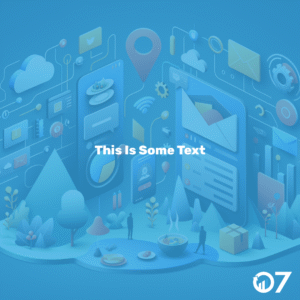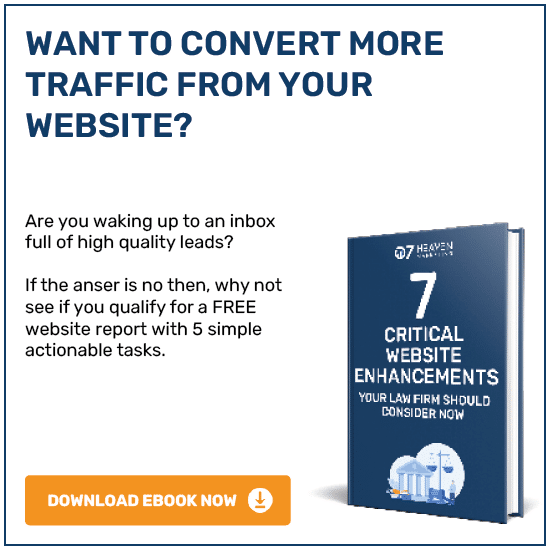Converting visitors into leads is the first step in creating a relationship between your company and a potential customer. You can do this by utilising a beautifully designed landing page that convinces your visitor to share their information with your company. You may be asking yourself, what are landing pages?
In this blog, we want to give you the full run down on what landing pages are and exactly why you should be using them for your business.
What are landing pages?
I am sure that you have heard the term “landing page” many times if you work within the digital marketing space. But what are landing pages?
Landing pages are standalone pages, specifically designed to convert visitors into leads. It is traditionally where a user lands after clicking on a link throughout your marketing campaign. This may come from an email, a social media channel or a CTA.
A landing page differs from a standard webpage as it is created with a single purpose.
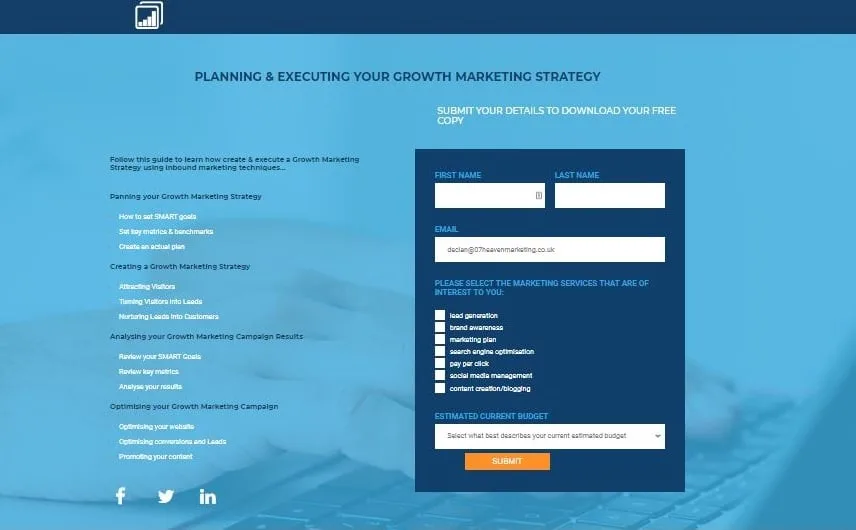
As seen from the image above a landing page consists of:
- A singular focus directing a visitor to a single goal.
- A form to capture a visitors’ personal information.
- Details of the offer available to the visitor.
- No navigational options in the header of the page.
How do landing pages work?
Now we know what landing pages are, it is time to understand how they work. Landing pages are designed to convert a visitor to your site by exchanging a piece of downloadable content for their information. It does this by delivering targeted content in the hope that the visitors on the page, will be interested enough to fill out a form and download the content.
Look at the customer experience for a landing page:
1) A potential customer clicks on a link within an email, on a social media channel or on a CTA on your website.
2) The potential customer is redirected to a landing page solely focused on that offer.
3) They fill out a form as they like the look of the content offer available.
4) The customer becomes a lead and is redirected to another page to download the content. You store the information collected on a CRM system.
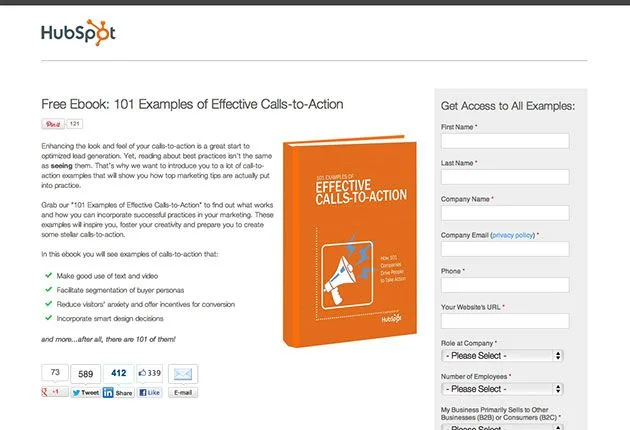
What are landing pages best practices?
Now you know what landing pages are and how they work, I bet you are dying to create one for your website. Look below at some of the best practices to follow when designing your landing pages.
Above the fold
Above the fold is the content the user first sees when they land on the landing page. This is generally the area of the screen visible without having to scroll up or down. It is roughly the top 600 pixels. These best practices are to be included in this section of the landing page.
Create a compelling headline
Your first task is to create a main headline for your landing page. It is vital that this headline is compelling. The headline should include emotive words that highlight the benefits/misfortune the reader will have if they do not download your offering.
Create a supporting headline
A supporting headline can be used in unison with your main headline. This should be used to elaborate on the main benefit/misfortune you touched upon in your main headline. You can also include a few extra words in the supporting headline allowing you to get any other relevant information in that will help capture your readers attention.
Include an aesthetically pleasing image
Including a relevant, aesthetically pleasing image is an important step in creating a landing page that converts. Naturally, humans react to visually pleasing graphics. Combining this with a headline that pops helps capture the visitor.
Create a personalised form to collect information
It is vital you include a form above the fold to collect the information of your visitor. This is the process that allows a landing page to be such an effective lead generator.
Within the form you should focus on including fields that are relevant for your sales process. The goal should be collecting information that helps you create a tailored sales approach to wow and engage your leads from the offset.
Write a short summary
You must write descriptive and emotive text that describes your product or service that will fit above the fold on the page. This text should be short and sharp and easy for the visitor to read. To make it easier it is best practice to use bullet point format for this text. If you do not like using bullet points you can also bold or underline and keywords that you want standing out to your visitor.
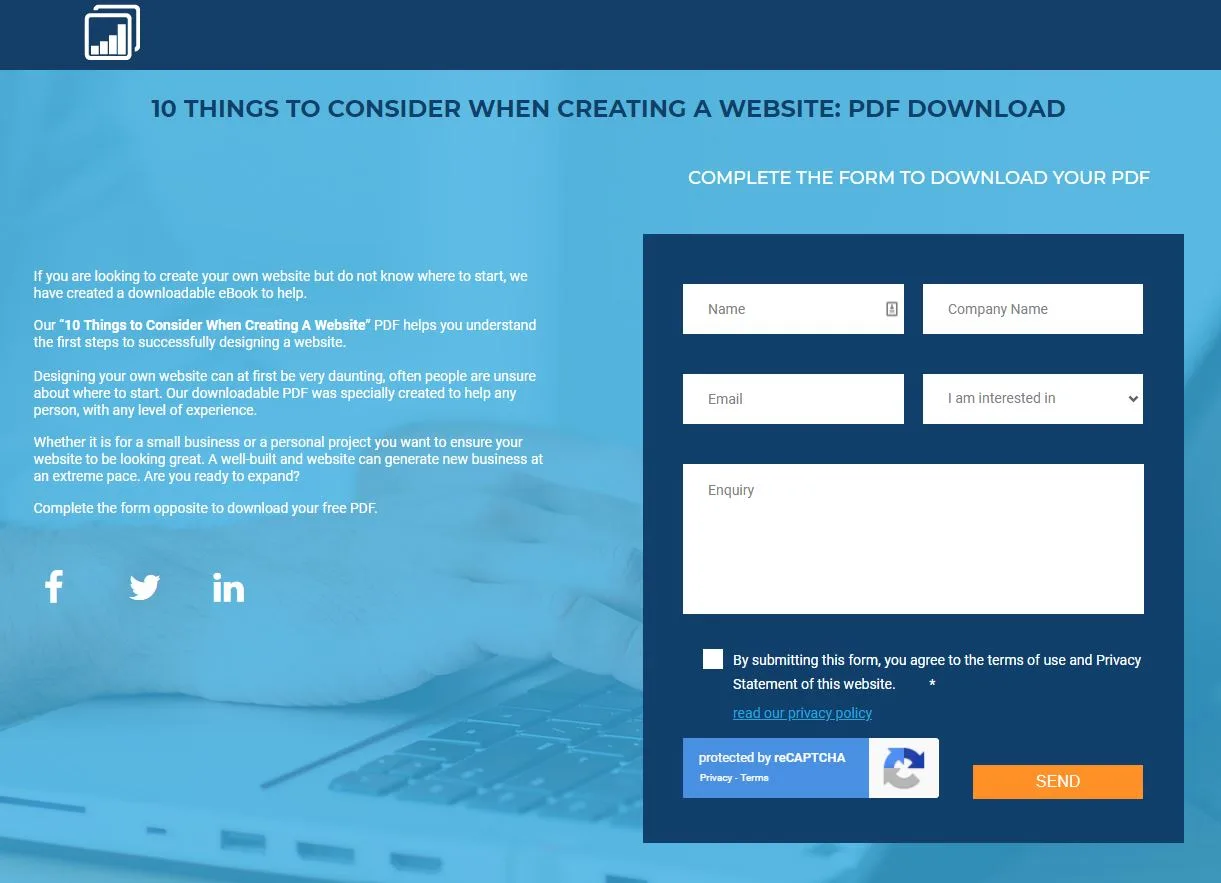
Below the fold
Below the fold refers to the part of the webpage that is not initially visible when you load a website. It is essentially the rest of the page, removing the “above the fold”.
Create additional text
Below the fold you can look to include further descriptive text about your product and services and the benefits they will bring to the visitor of the webpage. Unlike the text above the fold, you can include more information to really sell your product to your visitor.
Include testimonials
Another best practice for landing pages is including past client testimonials on the page. The testimonial should be as targeted and related to the content on offer as possible. This create positive reinforcement in the mind of the visitor that you are a trusted source of information within your niche.
Within this section you can also include links to your social media account. If you can show activity within a social space where you are interacting with customers, you will be able to boost your brands reputation.
Summarise in one statement
You should aim to summarise your entire landing page in a couple of sentences. Really consider the main goal of the page and how the content you are offering will add value to the visitor. You can also include a little about your business her if you have space.
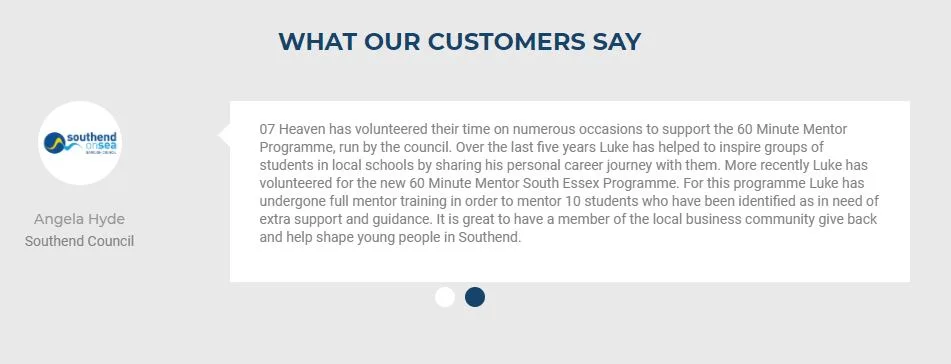
Why you should be using landing pages…
The statement should be – why would you not use landing pages? They are specifically designed webpages that help convert your website visitors into customers.
If you are spending time and resources on your website you should expect to see a return-of-investment. Landing pages are the tools to help you do exactly this. Check out some reasons why you should be using landing pages below:
- Increase conversion rate of the visitors onto your website.
- Collect information about a lead making it an easier sales process.
- Understand where your customers are in the sales funnel to allow you to target likely to purchase leads.
- Accelerate return-of-investment from the resources spent on your website.
- Create an easily trackable website page to improve on your lead conversion process.
- Offer free content to increase your brands reputation within your industry.
So, what are Landing pages and why you should be using them?
We hope that our blog has given you a greater understanding into what landing pages are and why you should be using them in your marketing efforts.
Landing pages are specifically designed webpages with one goal, converting your website visitors into leads. They also have other benefits such as help seeing an ROI on your website, making your sales process easier and increasing the reputation of your brand.
For further insights and guidance, we invite you to explore our blog at 07hm.co.uk/blog. Here, you’ll find a wealth of information tailored to the needs and challenges of SMEs navigating the digital landscape. Additionally, if you have specific questions or need personalised advice, don’t hesitate to reach out to us via email at info@07hm.co.uk or telephone on 01702 410663.




